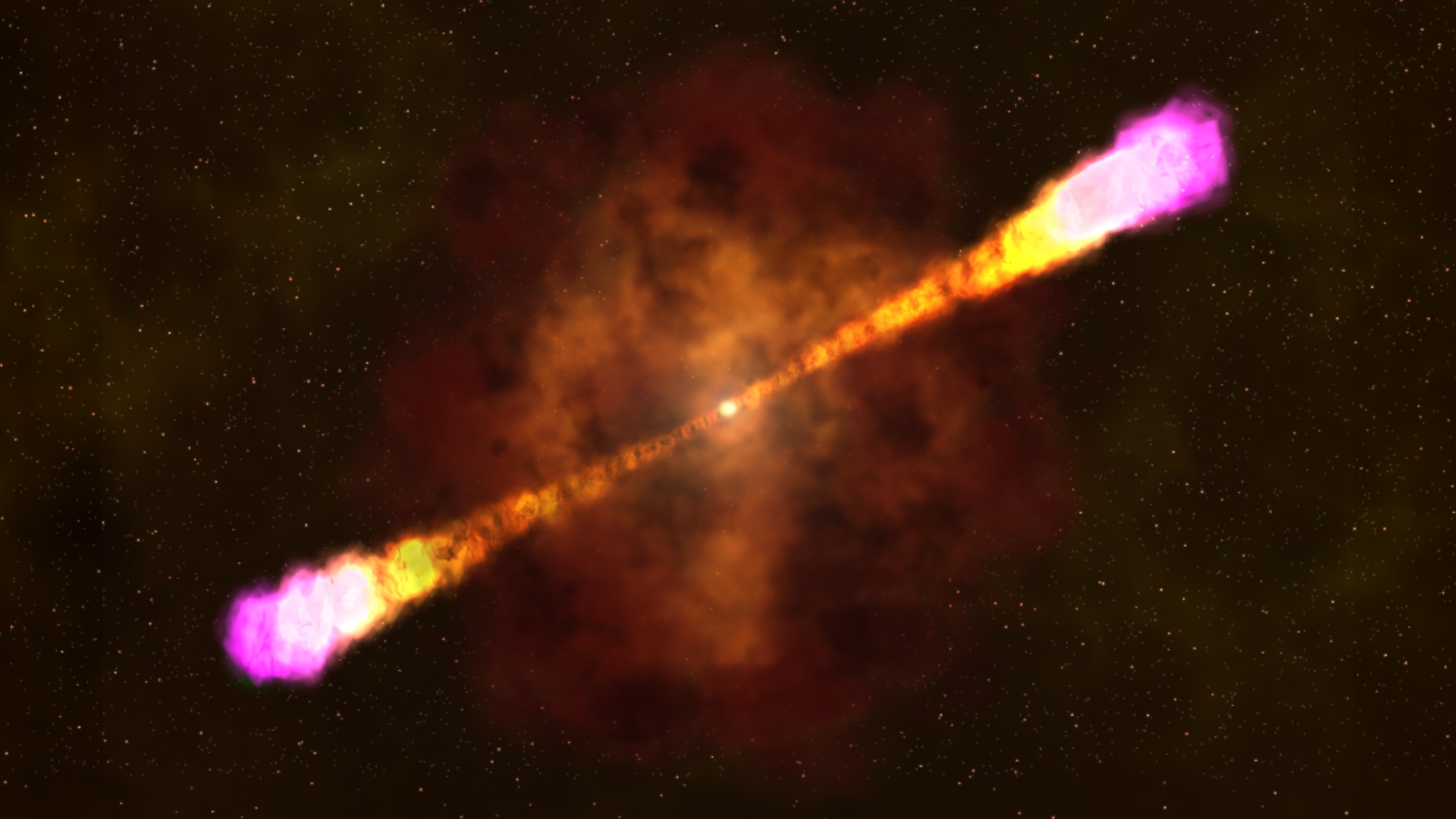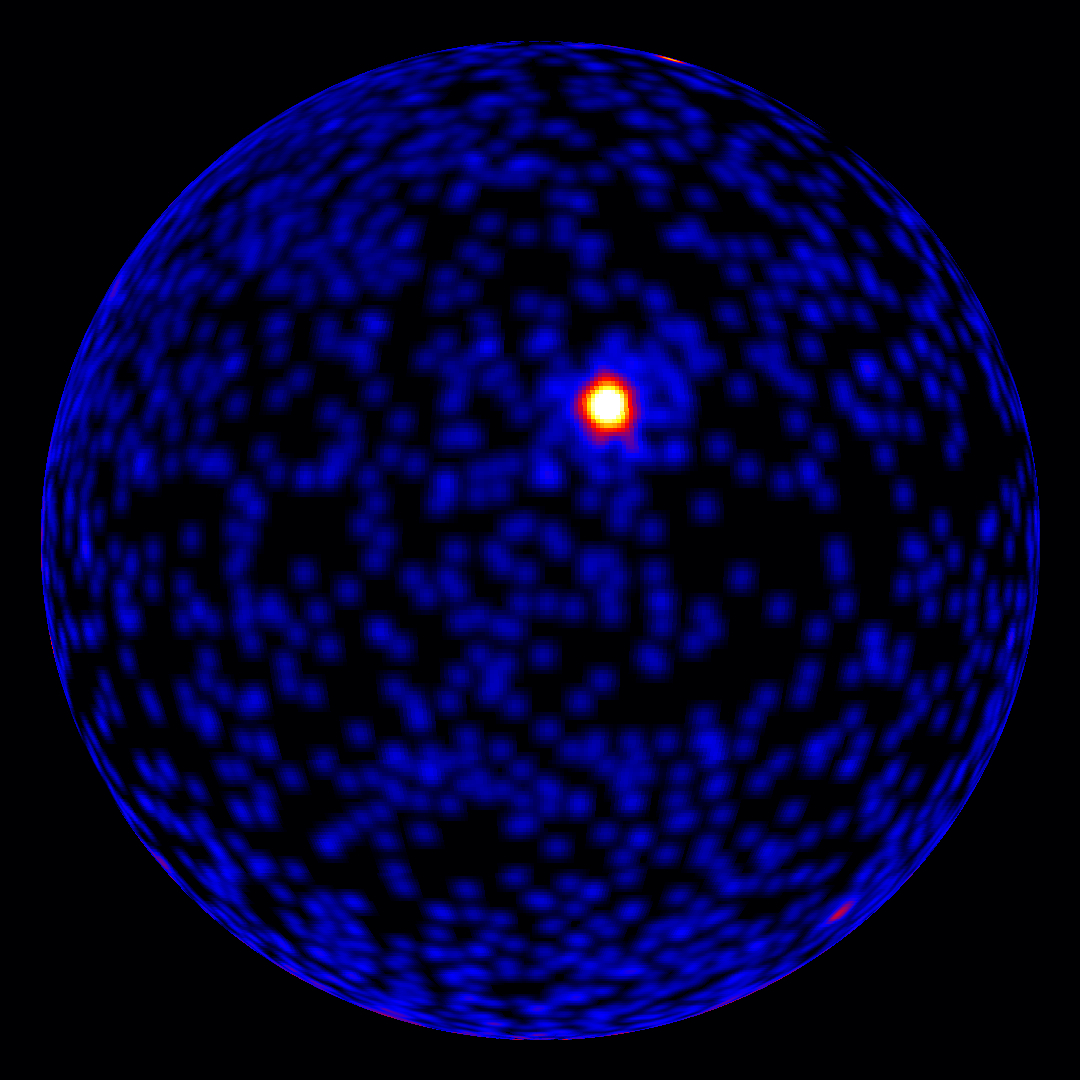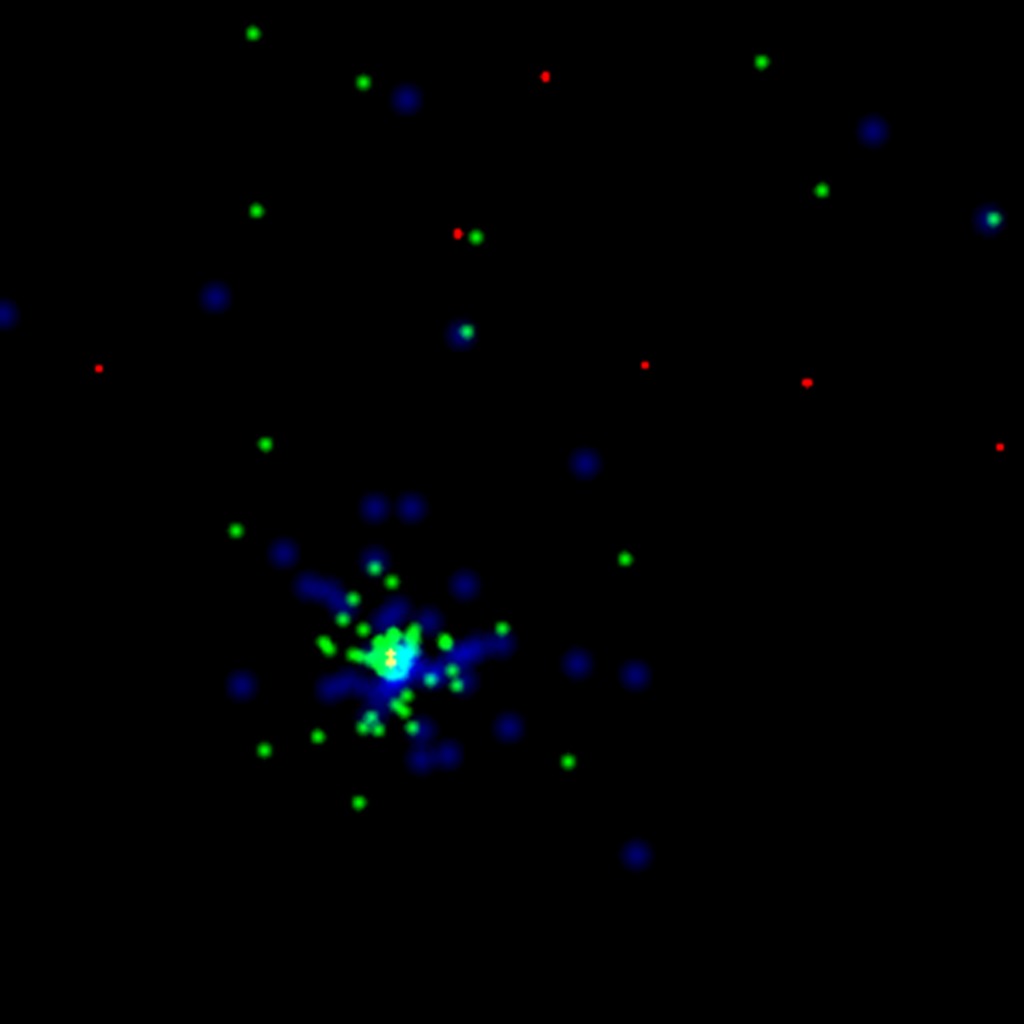Ten Years of High-Energy Gamma-ray Bursts

Green dots show the locations of 186 gamma-ray bursts observed by the Large Area Telescope (LAT) on NASA’s Fermi satellite during its first decade. Some noteworthy bursts are highlighted and labeled. Background: Constructed from nine years of LAT data, this map shows how the gamma-ray sky appears at energies above 10 billion electron volts. The plane of our Milky Way galaxy runs along the middle of the plot. Brighter colors indicate brighter gamma-ray sources.
Credit: NASA/DOE/Fermi LAT Collaboration
For a decade, NASA’s Fermi Gamma-ray Space Telescope has scanned the sky for gamma-ray bursts (GRBs), the universe’s most luminous explosions. A new catalog of the highest-energy blasts provides scientists with fresh insights into how they work.
GRBs emit gamma rays, the highest-energy form of light. Most GRBs occurs when some types of massive stars run out of fuel and collapse to create new black holes. Others happen when two neutron stars, superdense remnants of stellar explosions, merge. Both kinds of cataclysmic events create jets of particles that move near the speed of light. The gamma rays are produced in collisions of fast-moving material inside the jets and when the jets interact with the environment around the star.
Astronomers can distinguish the two GRB classes by the duration of their lower-energy gamma rays. Short bursts from neutron star mergers last less than 2 seconds, while long bursts typically continue for a minute or more. The new catalog, which includes 17 short and 169 long bursts, describes 186 events seen by Fermi’s Large Area Telescope (LAT) over the last 10 years.
The LAT sees about one-fifth of the sky at any time and records gamma rays with energies above 30 million electron volts (MeV) — millions of times the energy of visible light. Fermi’s other instrument, the Gamma-ray Burst Monitor (GBM), sees the entire sky that isn’t blocked by Earth and detects lower-energy emission. All told, the GBM has detected more than 2,300 GRBs so far.

An unlabeled version of the image above.
Credit: NASA’s Goddard Space Flight Center
GRB 130427A set the record for the highest-energy individual gamma ray detected by the LAT instrument. It also holds the record for the most gamma rays — 17 — with energies above 10 billion electron volts. The animation below illustrates the formation of a long GRB and its gamma-ray jets.
GRB 090510 helped test Einstein’s theory that all forms of light travel through the vacuum of space at the same speed. Learn more about the event in the video below, starting at 0:59.
For More Information
Credits
Please give credit for this item to:
NASA's Goddard Space Flight Center. However, individual items should be credited as indicated above.
-
Science writers
- Jeanette Kazmierczak (University of Maryland College Park)
- Francis Reddy (University of Maryland College Park)
-
Producer
- Scott Wiessinger (USRA)
-
Visualizer
- Francis Reddy (University of Maryland College Park)
Release date
This page was originally published on Thursday, June 13, 2019.
This page was last updated on Wednesday, May 3, 2023 at 1:45 PM EDT.
Missions
This page is related to the following missions:Series
This page can be found in the following series:Related papers
https://iopscience.iop.org/article/10.3847/1538-4357/ab1d4e
https://iopscience.iop.org/article/10.3847/1538-4357/ab1d4e


